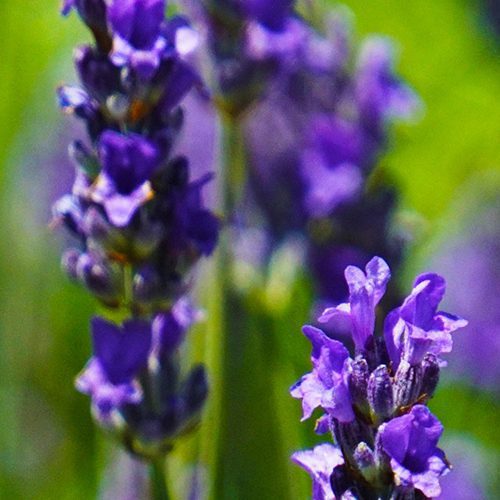Lavender
Latin name: Lavandula angustifolia
🌱 Days to Sprout: 14-30
😋 Ready for Full Dose of plant food with true leaves or roots .5-inch long
✂️ Thin to: 3 plants per yCube
🍅 Days to Maturity: 100-110
💡 Light Zone: High
📏 Plant Size: 1 ft
💚 Care Level: Intermediate
Origin
Originally from the Mediterranean, the Ancient Romans used Lavender to preserve linen. In the Middle Ages, people began using Lavender in perfumes and medicines, common applications that continue to this day.
Qualities
Lavender has striking silver-blue leaves and deep purple flowers, both of which give off its distinctive, soothing scent. When dried, Lavender can keep its fragrance for months and even years. It is thought that Lavender can help reduce anxiety, insomnia, and lower blood pressure.
Use
Steep Lavender in hot water, milk, or cream for a soothing drink. Try small amounts of fresh or dried leaves and flowers in baked goods or poultry dishes to lend a floral note (too much can become overpowering and bitter). Add dried Lavender to sachets and place around your home or in drawers to enjoy its scent longer.
Care & Harvest
✂️ Pruning: When Lavender first reaches 6-8 inches, prune back 1/3 of the plant to promote bushier, rather than taller, growth. Then allow the plant to grow and flower freely, only pruning once a year. We recommend checking the roots monthly and trimming any that are brown or extending past the yPod.
🔎 Plant Health: Aphids and whiteflies are common pests, but you can use our prevention and treatment tricks to keep pests at bay!
🌻 Harvest: Harvest by using clean shears to cut stems when about half of the flowers on the stem are in bloom. Be careful, as the woody stems can be tough to cut!
Our Plant Health & Nutrition Team thoroughly tests each variety we offer to bring you the most flavorful and high-quality plants. We regularly rotate our plant portfolio, so please note, availability varies.

